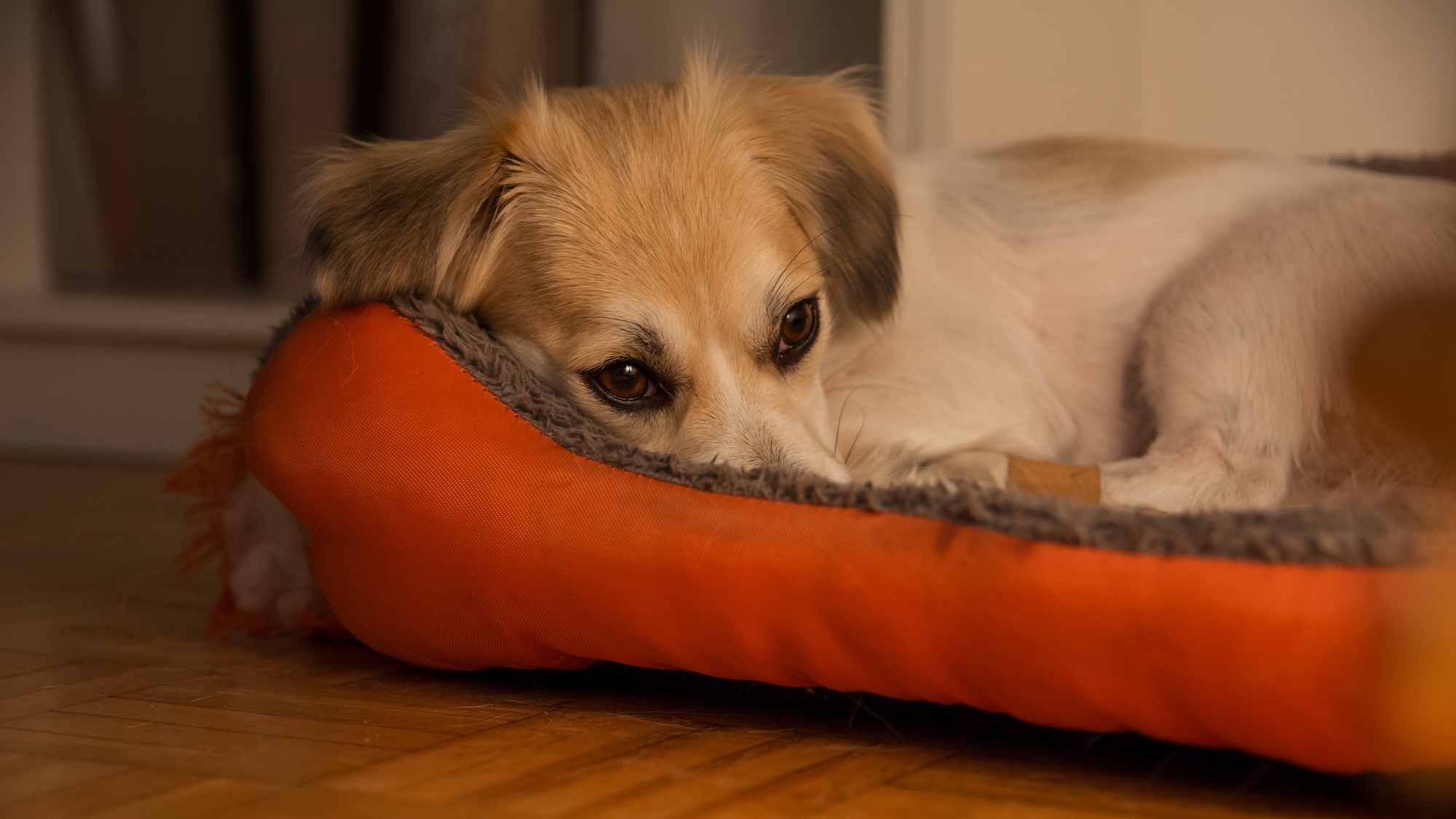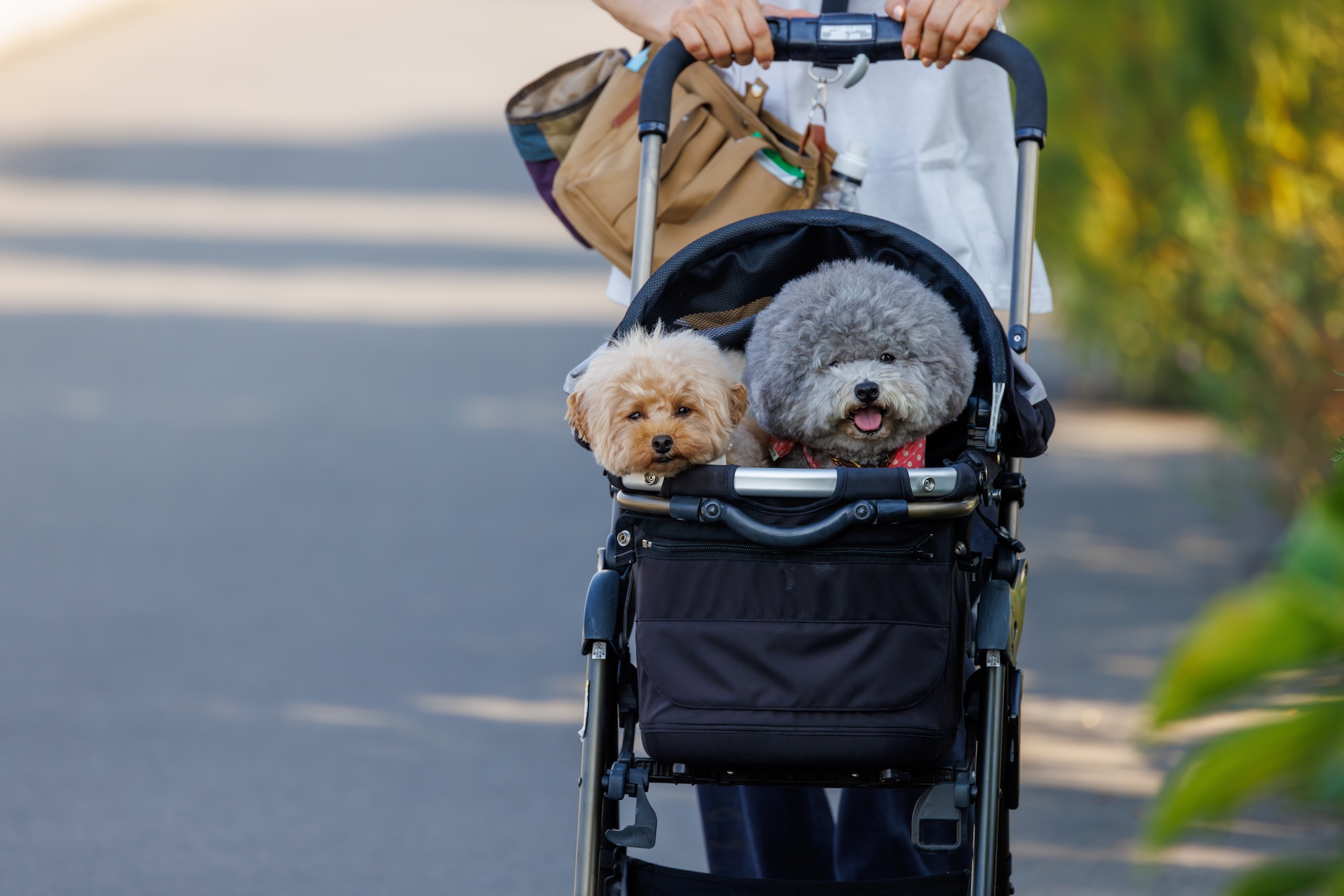If you have a dog, they’re going to chew—it’s normal behavior. Still, humans can be forgiven for wishing that their dogs wouldn’t munch on their favorite sandals or the legs of their antique chairs—plus, some targets of canine chewing can be hazardous to pups because they contain substances that dogs shouldn’t ingest, or because they have pieces that can break off and cause choking or an obstruction.
It’s possible for your dog to engage in natural chewing behavior without putting themselves in danger or destroying things that you want to remain intact. You can help them get there by offering them alternatives, giving them enrichment, and limiting their opportunities to chew items they shouldn’t. To help, here’s an overview of why some dogs gnaw on everything in sight, and how to nudge them toward better chewing choices.
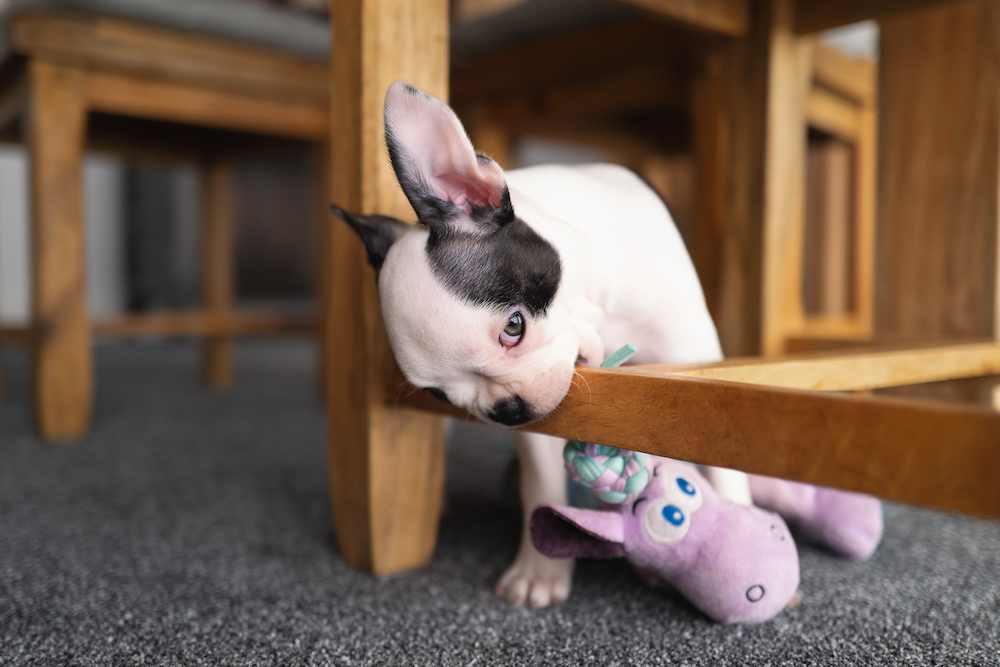
Why puppies chew
From around 20 weeks to 6 months of age, puppies experience teething. As their adult teeth grow in, they can feel pain—and chewing alleviates that sensation. If you don’t give them something approved and safe to chew, they will find something else. Their urge to chew is too powerful to ignore, and the relief it offers them is too good to pass up. And puppies are extra inclined to explore the world with their mouths.
The good news is that you can turn this to your advantage. “Sometimes with puppies,” says Denise Herman, founder and head trainer at Empire of the Dog in New York City, “you just have to isolate them with the thing you want them to chew”—meaning that the only chewable item within their reach should be something you choose—“because they’ll go, ‘Oh, shiny object,’ and chew the next thing that’s in their vicinity.” Puppies are so inclined to chew that if you make it easiest to chew something safe, they’re likely to accept the suggestion enthusiastically. And giving your puppy more opportunities for permissible chewing may also reduce their urge to seek out other chewable items.
While your puppy is learning what’s okay to chew and what isn’t, supervise them. You don’t want them to be running free in your house and getting a mouthful of baseboard. Herman also recommends keeping an eye on your pup when trying a new edible chew. “I always want to watch them the first couple of times,” she says, “to see how they navigate it when it gets smaller” and avoid choking and other mishaps. Different dogs may handle the same chew differently, so it’s always advisable to observe your dog’s particular approach.
If you have to leave for brief periods and your dog can’t be trusted to roam without ingesting dangerous items, you can restrict their movement during that time with a puppy gate or a crate. We have a full guide to crate training here. Keep in mind that a crate should be a pleasant, comfortable sanctuary for your dog, and should never be used as a jail or a punishment.
Giving puppies acceptable outlets for chewing will pay dividends now and later. Once you’ve set the foundation by giving them early positive experiences with safe, approved chews, they’ll be more likely to gravitate toward those options as they get older.
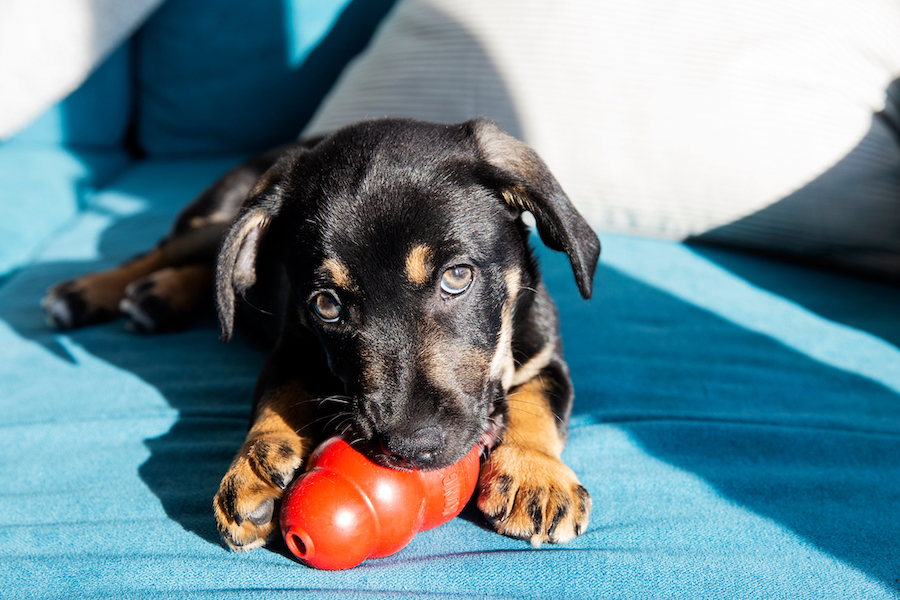
What is a good chewing option?
Herman says that a good chew should be “edible in whole or in part”—meaning that it should either be made out of food or be something like a Kong that can include food. And you should “be willing to put it down next to your favorite shoe,” meaning that your dog should be sufficiently interested in it that it outranks the unapproved targets of their masticatory pursuits. For the chew to work, your dog has to want it and stay interested in it.
You also want the ingredients of a chew, and whatever you use to fill a toy, to be safe. Dogs shouldn’t eat junk. We prefer recipes made with whole, fresh food.
Also do your best to provide your dog with some variety. Dogs, like humans, can get bored, so mixing up their options can be a good way to help them resist the siren song of your loafers or GameCube controller.
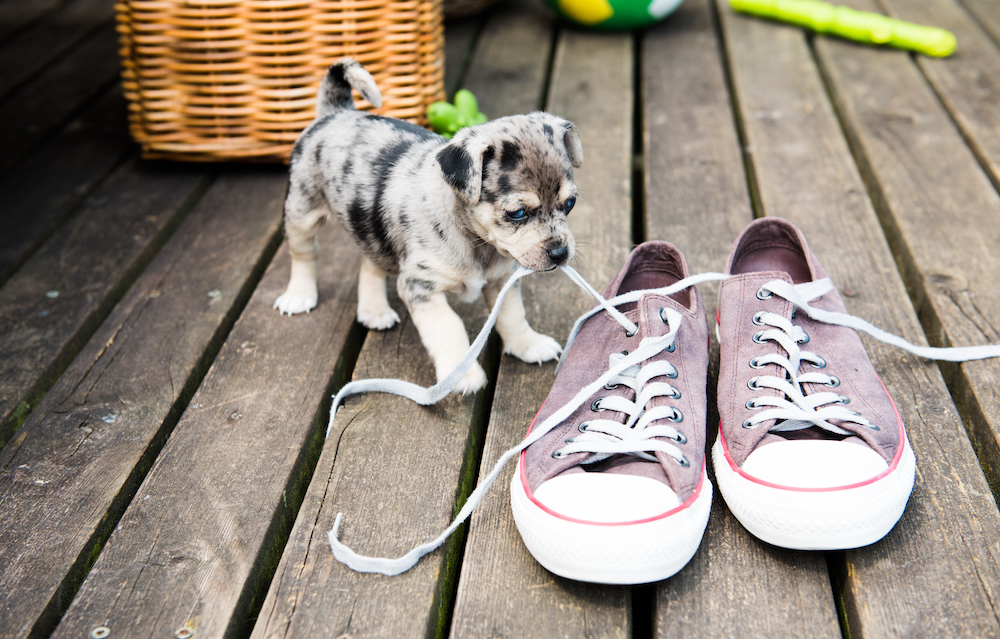
Why adult dogs chew
One reason that an adult dog may chew things you don’t want them to is lack of something better to do.
In a blog post for Psychology Today, ethologist Marc Bekoff wrote that “It’s essential to prevent a cycle of unmet needs, which leads to perpetual problems for both dog and guardian. If a dog’s needs aren’t being met, they will often find other outlets, many of which are a problem for their human.” One of these outlets can be unapproved chewing. So if your dog has problems like separation anxiety or insufficient enrichment, it may help reduce their unwanted chewing to address those root issues. Plus, it will improve their quality of life.
Adult dogs shouldn’t be expected to “grow out” of chewing—and chews, like puzzle toys, are useful outlets for dogs’ mental energy. This is important for any dog, but can be even more essential if they can’t spend as much time physically exercising due to injury or age. Says Herman, “Right now, my dog is 20—and when I find something that he really likes, I mush it into a toy because he needs to do something with his brain.”
Chewing unapproved objects may not be safe
Even if you didn’t care about any of your household items, it would be a good idea to redirect your dog’s chewing desires toward something designed for the purpose. That’s because not everything is safe for a dog to chew. Furniture might give them splinters or contain substances that are toxic to dogs. Consequences could range from mild stomach upset to a dangerous obstruction. You’ll both be better off if you’re confident that they’re chewing the right things.
Sprays aren’t a shortcut
No matter what, you have to address your dog’s needs and get them used to a lifestyle that works for both of you. As long as a spray is made from dog-safe ingredients and your dog can choose whether or not to chew objects coated with it, “there are far worse things for dogs,” says Herman. “But at the end of the day, are we going to slather everything in this?” If your dog has unmet chewing needs, they’ll find something else to go after. There aren’t any shortcuts.
Give your dog enough physical and mental exercise, and make sure that they’re allowed to chew things that you don’t mind seeing destroyed and that are healthy for them. If you are determined to make a spray part of your plan, check with your vet first to confirm that the product you choose isn’t harmful.
Don’t punish your dog for chewing the wrong thing—reward them for chewing the right thing
The solutions listed above have to do with giving your dog better options for their chewing needs. Your dog doesn’t know human rules, and it’s your job to find a way to direct them toward acceptable behavior. One thing they won’t understand is punishment. If you come home and see that the legs of your favorite chair have been whittled down to pencils, there’s no point in screaming at your pup. They’ll get upset, and won’t know what you’re mad about. If you catch them in the act, train them to trade the undesired chew for one you want them to use.
